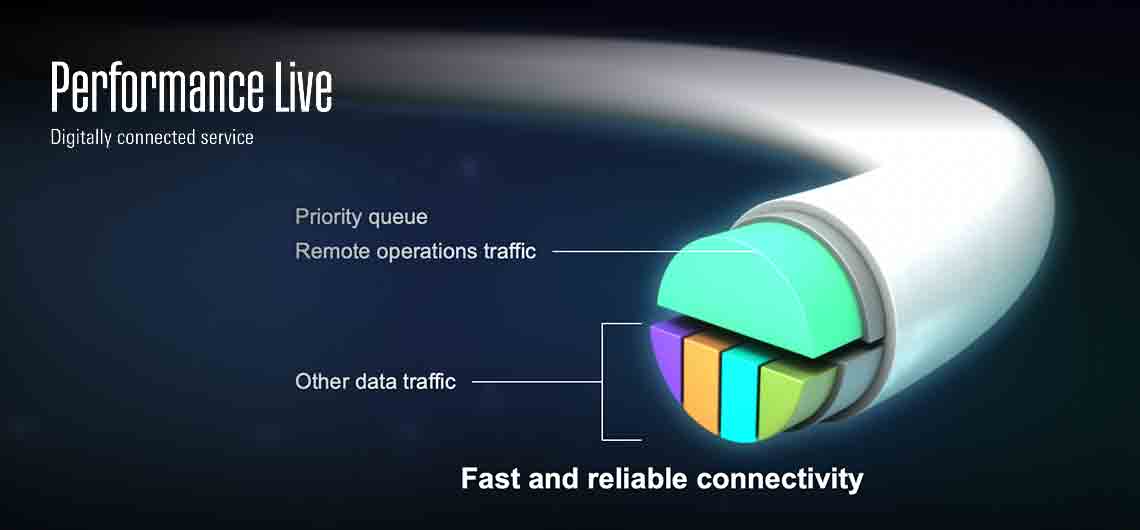New Digitally Connected Service Enables Live Remote Operations Control During Pandemic
Published: 10/26/2020

New Digitally Connected Service Enables Live Remote Operations Control During Pandemic
Published: 10/26/2020

The tendril effects of the COVID-19 pandemic have spread across the oil and gas value chain, spurring the need for rapid operational change. In the upstream sector, the pandemic has had a significant impact, forcing operators to find creative ways to reduce onsite crew size while still maintaining operational continuity. On top of this, increased market volatility and growing social consciousness for the environment have become a larger part of operational decision making. As a result, many operators are turning to advanced remote operations solutions.
In recent years, remote operations have evolved to the point where certain personnel who were once needed on a rig can now do their jobs remotely. Schlumberger’s answer for this is the Performance Live digitally connected service. This new service builds on the company’s more than 20 years of remote operations experience to optimize remote wellsite operations control while improving safety, efficiency and footprint.
Interview with Melisa Ramirez Tovar and Guandong Jiao: Performance Live Manager, Well Construction Melisa Ramirez Tovar and Performance Live Manager, Reservoir Performance Guandong Jiao explain how the Performance Live service has transformed the operating model for remote operations, making it more customer centric and agile. Melisa and Jiao also discuss how the service is solving some of the pressing health and safety challenges caused by the pandemic and how operators are using it to improve operational efficiencies and reduce CO2 emissions.
What makes the Performance Live service different from traditional remote operations solutions?
Melisa: In the late 2000s, Schlumberger introduced Operations Support Centers (OSCs) that enabled real-time monitoring of field activity, representing a significant step change for the industry. Since then, our remote operations solutions have been steadily evolving into increasingly digitally connected solutions, resulting in the Performance Live service. In the field, this evolution has been driven by developing new technologies, from downhole tools to surface system hardware and software, as well as designing new processes and building a robust infrastructure to enable rapid and scalable deployment. These elements, together with advancements in the usage of ever-increasing volumes of data, and the ability of our industry to manage and leverage that data; automation for optimizing workflows; and edge intelligence capabilities, have transformed traditional remote operations operating models from real-time data monitoring to live remote operational control. The implementation of this operating model provides a more consistent approach, enabling operators to consistently produce the best results while improving overall customer performance. This significantly changes the way the customer engages with the wellsite remotely, enabling the operator to be more agile and responsive to their operations.
When the pandemic started, how many of your customers were using the Performance Live service and how many are currently using it today?
Melisa: Prior to the pandemic, many offshore operators had already adopted remote operations solutions to improve their efficiencies and consistency. But to some, these solutions were considered mostly a nice-to-have. Now, they are critical to ensuring operational continuity.
Even though Schlumberger was deploying the Performance Live service before the COVID-19 pandemic began, within two months, worldwide use of the service expanded by 25%.
So far in 2020, the service has been adopted in over 84 countries. More than 5,000 directional drilling experts averted travel to hundreds of rigs daily. From March to August, Performance Live service engineers covered more than 50,000 shifts—for drilling and measurement activity—and 4,409 wireline runs, avoiding travel by more than 1,000 people. In June 2020, Performance Live service was used to complete 80% of drilling and measurements and wireline operations in one of the countries in the Middle East, setting the industry record for highest remote operation coverage.
Related Case Study: Digital Ecosystem Delivers Safe, Efficient, and Continuously Sustainable Wellsite Operations During Pandemic
Maintaining a reliable connection is one of the most important factors for remote operations. How does Performance Live service ensure this?
Jiao: The service provides operators with instant access to data and collaboration with multidomain experts via robust digital network linking centers spanning the globe. We strategically place our servers in certain countries to reduce data latency and ensure compliance to local data residency regulations; server support is provided by a global IT operations team, available 24/7.
We are systematically ensuring that remote operations traffic is the highest priority. By providing dedicated quality of service allocation for all remote operations on our network and those of our customers, connection reliability issues are eliminated for all remote operations tasks.
We take cybersecurity threats very seriously as we understand that protecting our network is protecting the strategic access to our digitalized equipment. All the connections to the wellsite are dedicated point to point, with secured and encrypted connections, in order to protect both our customers and our own data. Furthermore, Schlumberger’s Secure by Design and Secure in Operation philosophies make cyber security integral to new product development and provide ongoing and proactive cyber security protection.


The HSE threat from the virus has forced operators to re-think how they staff their rigs. Meanwhile, environmental concerns and new regulations are playing an ever-increasing role in operational decision making. How does the Performance Live service address these issues?
Melisa: The Performance Live service increases operational safety and reduces carbon footprint with less travel and fewer personnel needed. While a fully manned rig can have engineering crew of more than 10 people at the wellsite, the digitally connected service enables operations to be performed with crews of two or less, depending on the deployed technology.
With the current pandemic challenges, at the wellsite, crews are also required to maintain social distancing and other COVID-related HSE requirements. Reducing the amount of people that regularly operate at the rig is not just a safety measure but also part of health risk management processes, which in these times is more relevant than ever to help ensure people return home healthy to their families.
Carbon emissions at the wellsite are reduced due to the reduction of personnel logistics, remote living emissions and equipment transportation. The Performance Live service also improves the equipment utilization, which reduces the equipment transportation requirements as the tools are designed to have a health analyzer that indicates its reusability.
We have the capacity to offer this service today to every customer and it will surely bring more benefits over time as our vision and commitment to protecting people and the environment continues.
Related case study: Aker BP Uses Digitally Connected Service to Improve Well Integrity Evaluations in More than 50 Wells
How can Performance Live service increase operator efficiencies to help insulate them from increasing market volatility?
Jiao and Melisa: Today, operators are working with tighter budgets while facing rising pressure from investors to generate better returns. Remote operations solutions, such as the Performance Live service, can help operators reduce their costs while optimizing operations. A crucial function of the service is enabling instant access to data and collaboration with multidomain experts via global digital network linking centers. By opening any job to borderless competency management, operators can improve their operational flexibility and make faster, more informed decisions for directional drilling, well logging, formation testing and other offshore oil and gas operations. The service also decouples manual and analytical tasks, enabling engineers to focus on the former, working directly with domain experts to optimize job execution. This, combined with automated end-to-end workflows, minimizes redundancy and tedious manual tasks, thus delivering much more consistent service delivery.
Related case study: PTTEP Thailand Reduces Rig-Crew Footprint to Overcome Pandemic Challenges While Maintaining Improved ROP


